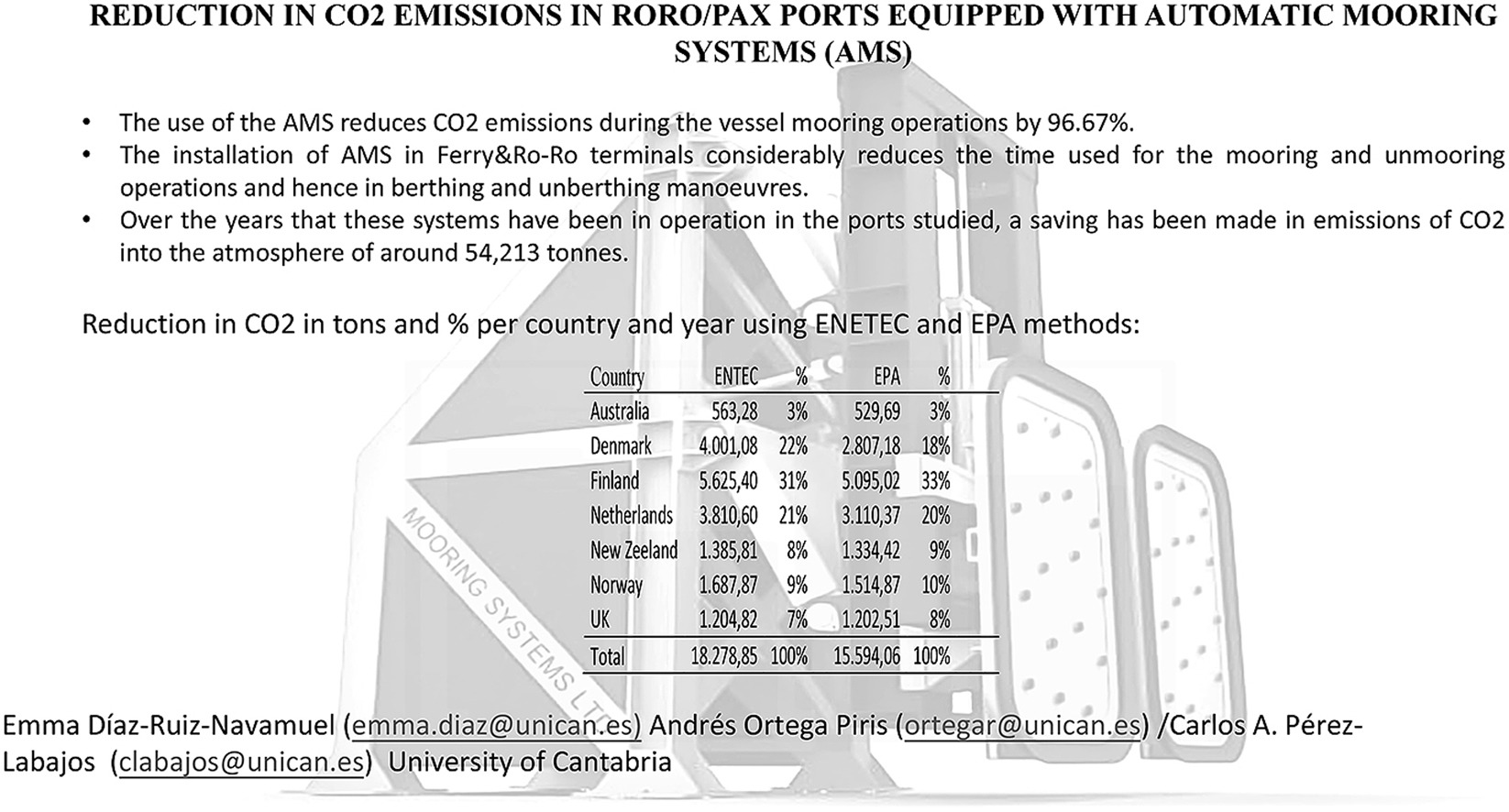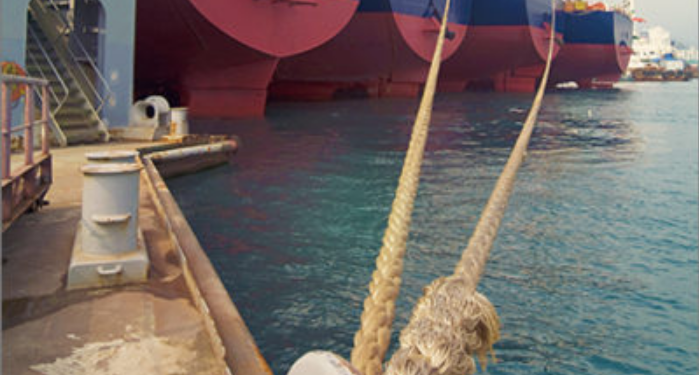A new report by the University of Cantabria, published in Science Direct, aims to verify the effect of the Automatic Mooring System (AMS) on the emission of pollutant gases in the surroundings of the installations devoted to Ro-Ro/Pax vessel traffic.
The study reveals that, in the RoRo/Pax terminals in which the AMS is installed and operating, a reduction in CO2 emissions of 97% has been estimated.
Highlights
- Automatic Mooring System reduce the time used in mooring vessels in port.
- The use of AMS considerably reduce the emissions of CO2 into the atmosphere.
- EPA and ENTEC methods are effective to determine lowering of the CO2 emissions.
- Nordic countries contribute most to the reduction in CO2 emissions by use of AMS.

Faced with the unavoidable reality of the emission of pollutant gases by vessels both while sailing and when performing in-port manoeuvres, the international community has devised an extensive set of rules to limit greenhouse gas emissions and the emission of other pollutants that significantly affect human health.
In order to make these reductions in the emissions, the areas addressed are the engine regime or speed control, the quality of the fuel used, the state of conservation of the vessel and its hull or the time taken to perform the manoeuvres of mooring and unmooring. One factor which is having a strong influence on this last aspect is the installation in commercial ports of Automatic Mooring Systems using suction cups (AMS).
These devices, which help to reduce considerably the time required to perform the mooring and unmooring manoeuvres, allow the times taken in operations for making steady a vessel to land and of releasing it to sail away to be reduced from some tens of minutes to a few seconds.






























































